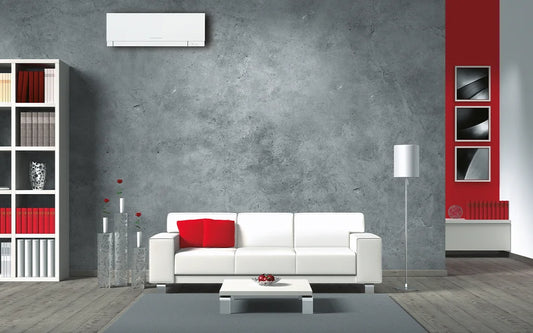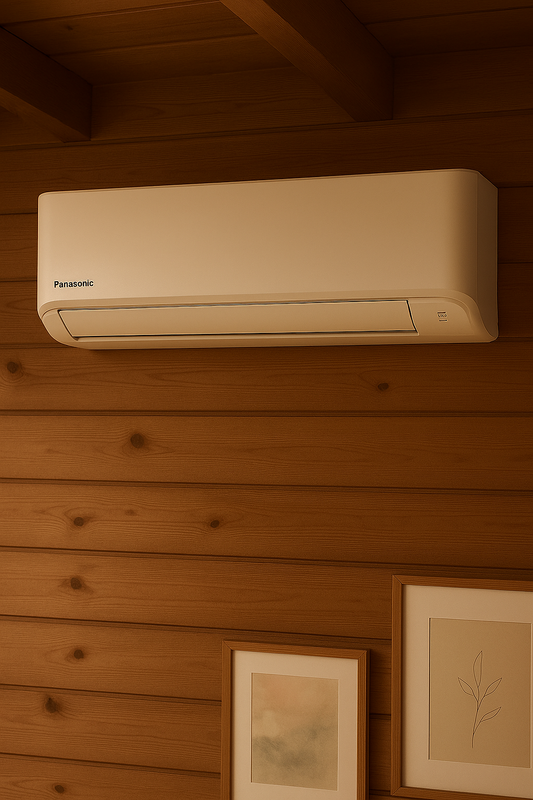Installera Luft Vatten Värmepump
Inledning
Att installera en luft vatten värmepump är ett effektivt sätt att dra nytta av förnybar energi och sänka energikostnaderna. Denna artikel kommer att utforska processen för installation samt dess fördelar och användningsområden.
Definition och Bakgrund
En luft vatten värmepump är en typ av värmepump som använder omgivande luft som energikälla för att värma upp vatten för uppvärmning av ett hem eller en byggnad. Genom att utnyttja värmen i luften kan värmepumpen generera värmeenergi även vid låga utomhustemperaturer. Denna teknik är miljövänlig och energieffektiv.
Fördelar och Användningsområden
En luft vatten värmepump erbjuder flera fördelar, inklusive minskade energikostnader, minskad klimatpåverkan och oberoende av fossila bränslen. Dess användningsområden sträcker sig från bostäder till kommersiella fastigheter. Genom att konvertera luftens värme till användbar energi kan värmepumpen skapa en bekväm inomhusmiljö året runt.
Relaterade Tekniker, Begrepp eller Variationer
Det finns flera relaterade tekniker och variationer av luft vatten värmepumpar, inklusive luft luft värmepumpar och mark vatten värmepumpar. Luft luft värmepumpar använder värmeenergin från luften för direkt uppvärmning av inomhusluften, medan mark vatten värmepumpar utnyttjar värmen i marken för att värma upp vatten. Det är viktigt att välja rätt typ av värmepump beroende på specifika behov och förutsättningar.
Vanliga Frågor (FAQ)
-
Hur fungerar en luft vatten värmepump?
En luft vatten värmepump fungerar genom att dra in omgivande luft och utnyttja dess värmeenergi för att värma upp vatten. Den genererade varma vattnet kan sedan användas för uppvärmning av bostäder eller kommersiella fastigheter.
-
Vad är skillnaden mellan luft vatten värmepumpar och andra typer av värmepumpar?
Luft vatten värmepumpar skiljer sig från luft luft värmepumpar genom att de värmer upp vatten istället för att direkt värma upp inomhusluften. Mark vatten värmepumpar å andra sidan utnyttjar värmen i marken istället för luften.
-
Vilka faktorer ska man överväga vid installation av en luft vatten värmepump?
Vid installation av en luft vatten värmepump är det viktigt att ta hänsyn till faktorer som utomhustemperatur, tillgängligt utrymme för enheten och eventuella tillståndskrav.
Sammanfattning
Att installera en luft vatten värmepump kan vara en kostnadseffektiv och miljövänlig lösning för uppvärmning av bostäder och kommersiella fastigheter. Genom att utnyttja omgivande luft som energikälla kan värmepumpen erbjuda en pålitlig och hållbar värmelösning. Genom att förstå dess funktion, fördelar och användningsområden kan man fatta informerade beslut vid installation av denna teknik.
Installation Process
The installation process of a air source heat pump involves several key steps. Firstly, the location for the outdoor unit needs to be determined, ensuring it has proper airflow and clear space around it. Next, the indoor unit and hot water cylinder are installed, typically in a utility room or garage. After the units are in place, the refrigerant and water pipes are connected, and the system is thoroughly checked for any leaks or faults. Finally, the system is commissioned and tested to ensure it is operating efficiently.
Energy Efficiency
One of the main advantages of air source heat pumps is their high energy efficiency. By harnessing renewable energy from the air, these systems can provide effective heating and hot water while significantly reducing carbon emissions. This not only benefits the environment but also contributes to lower energy bills for the property owner.
Real-life Examples
Many homeowners and businesses have successfully integrated air source heat pumps into their properties, experiencing tangible benefits. For example, a residential property in a moderate climate saw a reduction in annual heating costs by 30% after installing an air source heat pump. Similarly, a commercial building utilized air source heat pumps for both heating and cooling, resulting in substantial energy savings and a more comfortable indoor environment for occupants.
Regulatory Considerations
Before proceeding with the installation of an air source heat pump, it is essential to be aware of any local regulations or permits required. In some areas, specific permissions may be necessary for the installation of outdoor units or modifications to existing heating systems. Consulting with a qualified installer or relevant authorities can ensure compliance with all necessary regulations.
Maintenance and Longevity
To ensure optimal performance and longevity of an air source heat pump, regular maintenance is crucial. This may involve tasks such as cleaning filters, checking refrigerant levels, and inspecting electrical components. Additionally, professional servicing at recommended intervals can prevent potential issues and extend the lifespan of the system, ultimately maximizing its effectiveness and efficiency.
Environmental Impact
Installing a air source heat pump can have a positive impact on the environment by reducing the reliance on traditional heating systems that consume non-renewable energy sources. By utilizing the heat from the air, these heat pumps contribute to lower carbon emissions and help mitigate the effects of climate change. This environmentally friendly approach to heating aligns with sustainable practices and supports a greener future.
Financial Incentives
In many regions, there are financial incentives and government schemes available to support the installation of air source heat pumps. These incentives may include grants, tax credits, or subsidies aimed at promoting the adoption of renewable energy technologies. By taking advantage of these programs, property owners can offset a portion of the initial investment and accelerate the economic benefits of installing a air source heat pump.
Adaptability to Varied Climates
Air source heat pumps have demonstrated adaptability to a wide range of climates, including colder regions. With advancements in technology, modern heat pump models can effectively extract heat from the air even in sub-zero temperatures, making them suitable for diverse geographical locations. This versatility expands the potential applications of air source heat pumps and enhances their appeal as a reliable heating solution.
Integration with Renewable Energy Systems
Integrating air source heat pumps with other renewable energy systems, such as solar panels or wind turbines, can create a comprehensive and sustainable energy strategy for a property. By combining multiple renewable sources, property owners can further reduce their reliance on conventional energy sources and achieve greater energy independence. This integrated approach contributes to a more resilient and eco-friendly energy infrastructure.
Additional Considerations
When planning the installation of a air source heat pump, it's important to consider additional factors that can impact its performance. This may include the orientation of the property, the insulation levels, and the existing heating infrastructure. By addressing these considerations, the overall effectiveness of the heat pump system can be optimized.
Noise Levels and Mitigation
While air source heat pumps are generally designed to operate quietly, it's essential to assess and mitigate any potential noise issues, especially in residential settings. Proper placement of the outdoor unit and the use of sound-absorbing materials can help minimize operational noise, ensuring a comfortable and peaceful environment for occupants.
Smart Control and Monitoring
The integration of smart control and monitoring systems can enhance the functionality and efficiency of air source heat pumps. By utilizing advanced control features, property owners can optimize heating schedules, monitor energy consumption, and remotely adjust settings, contributing to greater convenience and energy savings.
Backup Heating Solutions
While air source heat pumps offer reliable heating in most conditions, it's prudent to have backup heating solutions in place, particularly in colder climates. This may involve retaining an existing heating system as a supplementary option to ensure continuous comfort and warmth during extreme weather or in case of any heat pump malfunctions.
Case Study: Residential Retrofit
In a retrofit project, a traditional gas-heated residential property in an urban area transitioned to an air source heat pump system. This change led to a significant reduction in carbon emissions and energy costs, demonstrating the potential of air source heat pumps to transform the environmental and economic performance of existing buildings.
Case Study: Industrial Application
An industrial facility specializing in food processing implemented air source heat pumps to fulfill their extensive heating requirements. The adoption of these heat pumps resulted in substantial energy savings and a notable reduction in the facility's carbon footprint, aligning with their commitment to sustainable operational practices.
Community and District Heating
Air source heat pumps can also be integrated into community or district heating schemes, providing a collective and efficient heating solution for multiple properties. By centralizing the heat generation and distribution, these systems contribute to energy savings and environmental benefits on a larger scale, benefiting entire neighborhoods or developments.
Continuous Advancements in Technology
Ongoing research and development in the field of air source heat pumps continue to drive technological advancements. Innovations such as improved compressor designs, enhanced refrigerants, and smart heat exchanger configurations contribute to higher efficiency, reliability, and sustainability of these heating systems, paving the way for even more effective solutions in the future.
Conclusion
The installation and utilization of air source heat pumps offer a multitude of benefits, ranging from energy efficiency and environmental responsibility to financial incentives and adaptability. As the demand for sustainable heating solutions grows, the continued evolution of air source heat pump technology presents opportunities for individuals, businesses, and communities to embrace a greener and more efficient approach to heating.



